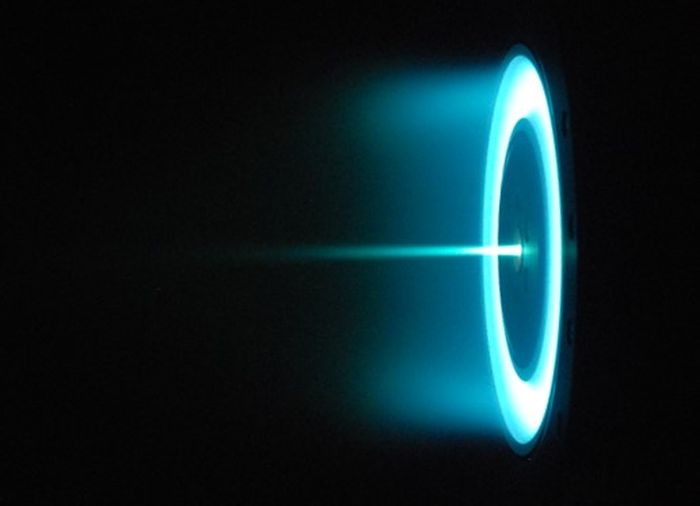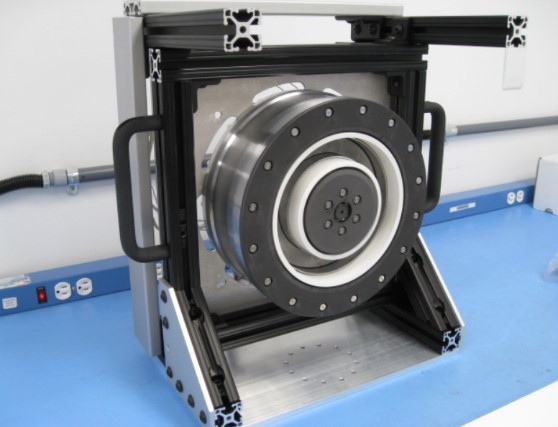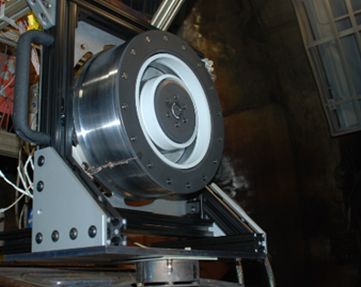
Aerojet Rocketdyne’s next-generation medium-power Hall thruster firing for the first time in a vacuum chamber at the Plasmadynamics and Electric Propulsion Laboratory at the University of Michigan.
June 2021 – Aerojet Rocketdyne recently began testing a newly developed, next-generation medium-power electric propulsion thruster under contract to the U.S. Space Force. The featured image shows the first firing of the second generation medium-power Hall thruster, which was designed to improve performance and affordability to meet in-space propulsion requirements.
“Building on our vast flight experience from our pioneering XR-5 Hall thruster, this medium-power thruster will support an emerging market demand for electric propulsion systems,” said Aerojet Rocketdyne’s Director of Electric Propulsion Programs Don Mahr. “This test demonstrated an Aerojet Rocketdyne-developed heaterless cathode that increases reliability, decreases cost and can operate using a wider range of propellants.”
The XR-5 Hall thruster has an impressive track record of successfully propelling government and commercial spacecraft, including the Space Force’s Advanced Extremely High Frequency (AEHF) constellation, Northrop Grumman’s GEOstar-3™-based satellites and Mission Extension Vehicles; and satellites built using Lockheed Martin’s LM2100™ platform.
Aerojet Rocketdyne began development of the medium-power thruster in April 2020 and started testing it in March of this year at the University of Michigan. Testing began at the beginning of April and will conclude in June. The program is funded in part by company IRAD and government funding.
Aerojet Rocketdyne is also under contract to develop a next-generation power processing unit (PPU) and propellant flow controller that will work in conjunction with the newly developed thruster to provide a complete system compatible with a wide range of spacecraft buses and propellants.
“The thruster team has reached a major milestone in the successful demonstration of this state-of-the-art Hall thruster design,” said Aerojet Rocketdyne’s Hall Thruster Systems Product Line Chief Engineer Justin Pucci. “Supported by the PPU and propellant flow controller, this thruster design is sure to strengthen Aerojet Rocketdyne’s position in the medium-power electric propulsion arena and support our customers’ critical missions for years to come.”

Assembled next-generation Hall thruster at Aerojet Rocketdyne’s facility located in Redmond, Washington

Next-generation Hall thruster installed on the test stand at the University of Michigan

